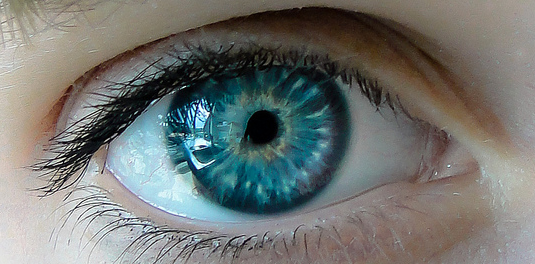At the Tel Aviv University in Israel, a research team is developing a retinal implant that restores sight in patients that suffer from degenerative diseases of the retina.The retina is a film of tissue that lines the back of the eye and it is made up of 10 layers, including photoreceptors, which convert light into electrical signals. This stimulates the neural layers, which send signals from the retina to the part of the brain that deals with sight in order to create a visual sensation.‘In these diseases, light-sensitive neurons – the photoreceptors – undergo progressive degeneration, while the rest of retinal neuronal layers remain largely intact,’ said Dr David Rand, a research associate at Tel Aviv University.The IssueAge-related eye conditions are the most common cause of sight loss in Europe. Around 20 million people in Europe have age-related macular degeneration (AMD), for which there iscurrently no cure.By 2025, more than 20 % of Europe’s population is expected to beolder than 65and the number of people suffering from age-related conditions is expected to rise as the European population ages.In October 2015, European citizens selectedageing societyas the topic which should be the focus of a EUR 2 million technology inducement prize.Dr Rand is part of a team working on the FUNMANIA project, led by Professor Yael Hanein and funded by the EU’s European Research Council (ERC), to create a new type of retinal implant.Retinal implants are devices that can be inserted into the eye to replace the damaged photoreceptors. The big difference between retinal implants in the market today and those FUNMANIA are working on lies in the materials.MicroelectronicsCurrently available retinal implants are based on modern microelectronics. They receive an input from either an external camera or a so-called photodiode, a device that converts light into an electrical current. The signal processing is done by a microprocessor, a technology based on semiconductors fabricated on a silicon chip.‘The materials (currently) in use are rigid and designed to operate in a dry environment, which makes them unsuitable for the biological surrounding,’ said Dr Rand.In contrast, FUNMANIA’s implants, which are just a few millimetres in size, are made out of nanomaterials and can operate in a wet environment. The idea is to use flexible carbon nanotubes that conduct electricity to mimic the retinal photoreceptors and create higher resolutions than ever before.‘Our device is based on soft, flexible, organic material that serves as a platform for an array of microscale light-sensitive and wire-free microelectrodes,’ he said.“‘It is a standalone device, with a size of just a few millimetres.’Dr David Rand, Tel Aviv University, IsraelSo far, the team have managed to use carbon nanotubes and semiconducting nanocrystals, known as quantum dots, to make light-sensitive electrodes, and have made a biocompatible carrier for the electrodes to embed them in. They hope to develop this technology over the next two years.‘In parallel, we have developed the surgical procedure and implanted several implants in rabbits and rats for the purpose of biocompatibility assessment,’ said Dr Rand.Machine visionWhile technology developed byFUNMANIAis being used to restore people’s vision, our ability to see is also helping to improve machines, thanks to a separate group of researchers who have been making image sensors that are inspired by the human eye.The EU-funded SeeBetter project was set up to create faster and more precise image sensors using inspiration from biological retinas. Conventional image sensors, like those you might find in your phone or camera, are limited compared to our own eyes in their ability to process images in both space and time.The SeeBetter researchers modelled retinal vision mathematically and computationally in order to better understand the role of cells in the retina. The ultimate goal was to build a silicon retina with pixels that can process images like the cells in the eye.Article continues belowThe sensors the SeeBetter researchers developed can quickly process images such as a person flipping playing cards in their hands. Image courtesy of SeeBetterThe new sensors made by the researchers are much faster than conventional sensors because instead of only producing a signal proportional to the amount of light hitting the pixels, each pixel reacts to changes in light intensity.Dr David San Segundo Bello, a researcher at IMEC, a nanoelectronics research centre in Belgium, and lead researcher on SeeBetter, says that the finished product has demonstrated its worth in a variety of applications, including the sensor being used to track a remote-control racing car.Other uses could include medical diagnosis and treatment. ‘Their inherent object and shape detection could be used in biomedical applications such as cell counting and classification,’ he said.
This article was originally published in Horizon, the EU Research and Innovation magazine.
Add to favorites:
Share:
Listing Description
Video
Documents
No documents available.
Ask KETMarket to make a contact
Connect with the Listing Owner!
💬 Please log in now to askKETMarket to make a contact. Not a member yet? Sign up for free and start connecting today!
Video
Related Funding and Finance Opportunities
Unlock Exclusive Funding Opportunities!
🔑 Get instant access to tailored funding opportunities that perfectly match your needs. This powerful feature is exclusively available to our premium members—helping you save time, stay ahead of the competition, and secure the right funding faster.
Upgrade to Premium now and never miss an important opportunity again! Already a premium member? Log in here to explore your matches.
Related Innovation Offers
Discover Tailored Innovation Offers!
🚀 Gain access to technology solutions that match your specific needs and interests—carefully selected to support your innovation goals. These offers are exclusively available to our premium members, helping you identify relevant technologies faster and start the right conversations with potential partners.
Upgrade to Premium now and explore your personalized technology matches today! Already a premium member? Log in here to view your tailored offers.
Related Knowledgeable Resources
Discover More with Premium: Related Knowledge Resources
🔒 You’re missing out on expert-curated knowledge specifically matched to this topic. As a Premium member, you gain exclusive access to in-depth articles, guides, and insights that help you make smarter decisions, faster.
Whether you’re preparing a funding proposal, researching a new market, or just need reliable information—our Premium knowledge matches save you hours of research and point you directly to what matters.
Upgrade to Premium now and instantly unlock relevant knowledge tailored to your needs! Already a member? Log in here to view your personalized content.

